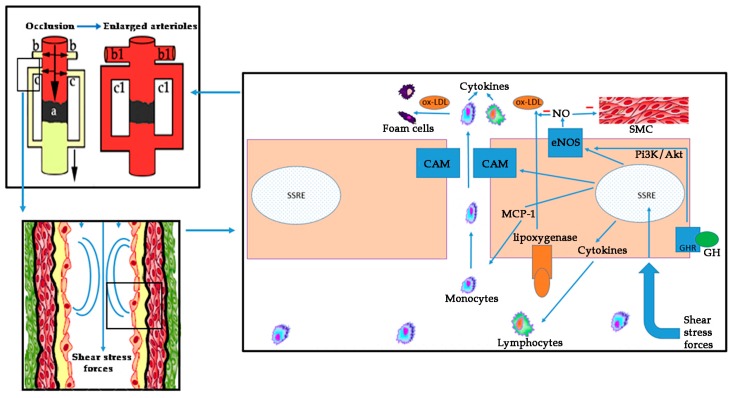Figure 6.
Mechanism of arteriogenesis. Oxidative stress at endothelial cell level produces LDL oxidation (ox-LDL) and foam cells formation that compose atheroma plaque, and, in the end, determine the vessels occlusion. After an arterial occlusion (a), the increase in shear stress forces through the collateral vessels (b, c) activates shear stress genes (SSRE) triggering the arteriogenic response. Adhesion molecules (CAM) and some cytokines such as MCP-1 are produced by the endothelial cells, attracting monocytes and lymphocytes from the blood to the vascular wall that start up the vascular remodeling (b1,c1). eNOs is also activated, increasing NO that produces vasodilation, inhibits SMC growing and the oxidation of LDL molecules. These facts lead to the control of the atheroma plaque, lowering oxidative stress. GH contributes to increase NO pathway by activating the Pi3K/Akt pathway. NO: nitric oxide; eNOS: endothelial nitric oxide synthase; ox-LDL: oxidized low density lipoprotein; GH: growth hormone; GHR: GH receptor; SSRE: shear stress response elements (promoter sequences that mediates the responsiveness of endothelial genes to shear stress); SMC: smooth muscle cells. Blue arrows indicate stimulation. Red line indicates inhibition of SMC growth and inhibition of ox-LDL. Black arrow indicates the absence of blood flow after the occlusion, due to the lack of enlargement of collateral arterioles.

